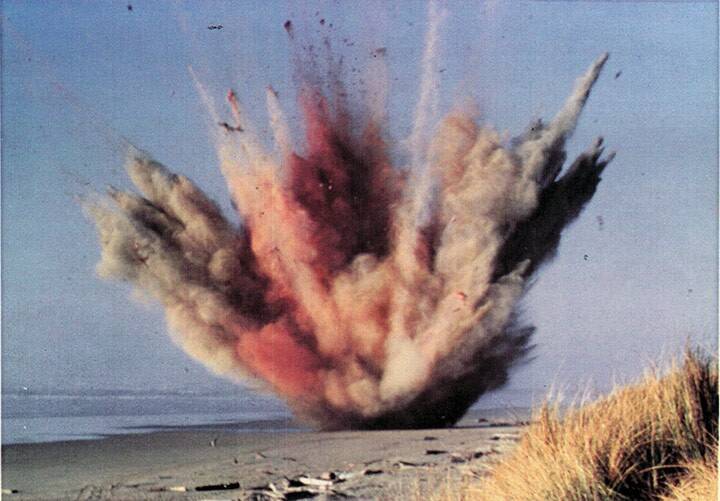When the town of Florence tried to dispose of a dead whale that had washed up on its beaches using dynamite, nothing went as planned.
On November 9, 1970, the carcass of an eight-ton, 45-foot-long sperm whale washed up on the beach near the small town of Florence, Oregon. For the next several days, the whale sat rotting on the shore. As local KATU news anchor Paul Linnman noted at the time, the Oregon State Highway Department “not only had a whale of a problem on its hands — it had a stinking whale of a problem.”
Obviously, they couldn’t just leave the whale on the beach, but what could they do with it? Meanwhile, officials worried that the longer the whale sat on the beach, the more dangerous the situation could become. What if someone, for example, tried to climb on top of the whale and fell into it?
A number of solutions were offered, but each seemed more implausible than the last. They could bury the whale, some said, but that would be a monumental task. Besides, would it even be effective? Wouldn’t the whale’s decaying flesh simply become exposed again shortly afterward?
Then, there were those who suggested cutting the whale’s carcass into pieces after relieving methane pressure with incisions, but this came with its own set of problems – namely that nobody seemed eager to do it. But thankfully, Assistant District Highway Engineer George Thornton finally came up with a creative solution for what to do with the whale: blow it up.
And ridiculous as that may sound, it was precisely the course of action that the authorities decided to take. But they couldn’t just strap some dynamite to the whale, press a button, and call it a day.
Thornton wanted to do it safely and, ideally, with as little mess as possible. He contacted munitions experts from the U.S. Navy who helped him determine the amount of explosives required for this bold approach.
Then, Thornton had the explosives positioned on the side of the whale nearer to the dunes, hoping that the force of the blast would send the dead whale soaring in the opposite direction, out into the ocean. Any remaining whale chunks on the beach, they figured, would simply be eaten by seagulls and other scavengers.

KATU/YouTubeHalf a ton of dynamite was used in the infamous exploding whale incident.
With the plan in place, the explosion was set for November 12. That afternoon, crowds, officials, and reporters gathered on the beach in anticipation of a one-of-a-kind spectacle. Thornton cleared a quarter-mile perimeter around the whale to keep onlookers at a safe distance from the explosion, but he had no idea just how far those whale chunks would fly.
In all, 20 cases of dynamite were used to blow up the whale. Those in attendance watched in awe as the explosion went off and the whale erupted in a blubbery blast – then, the crowd’s fascination immediately turned to horror as massive chunks of flesh started raining down upon them.
In the words of newscaster Paul Linnman, “The blast blasted blubber beyond all believable bounds.”
Dig deeper into the astonishing story of Oregon’s exploding whale incident of 1970.
Learn more about the music used in our podcast. History Uncovered is part of the Airwave Media network. Learn more about your ad choices by visiting megaphone.fm/adchoices.






